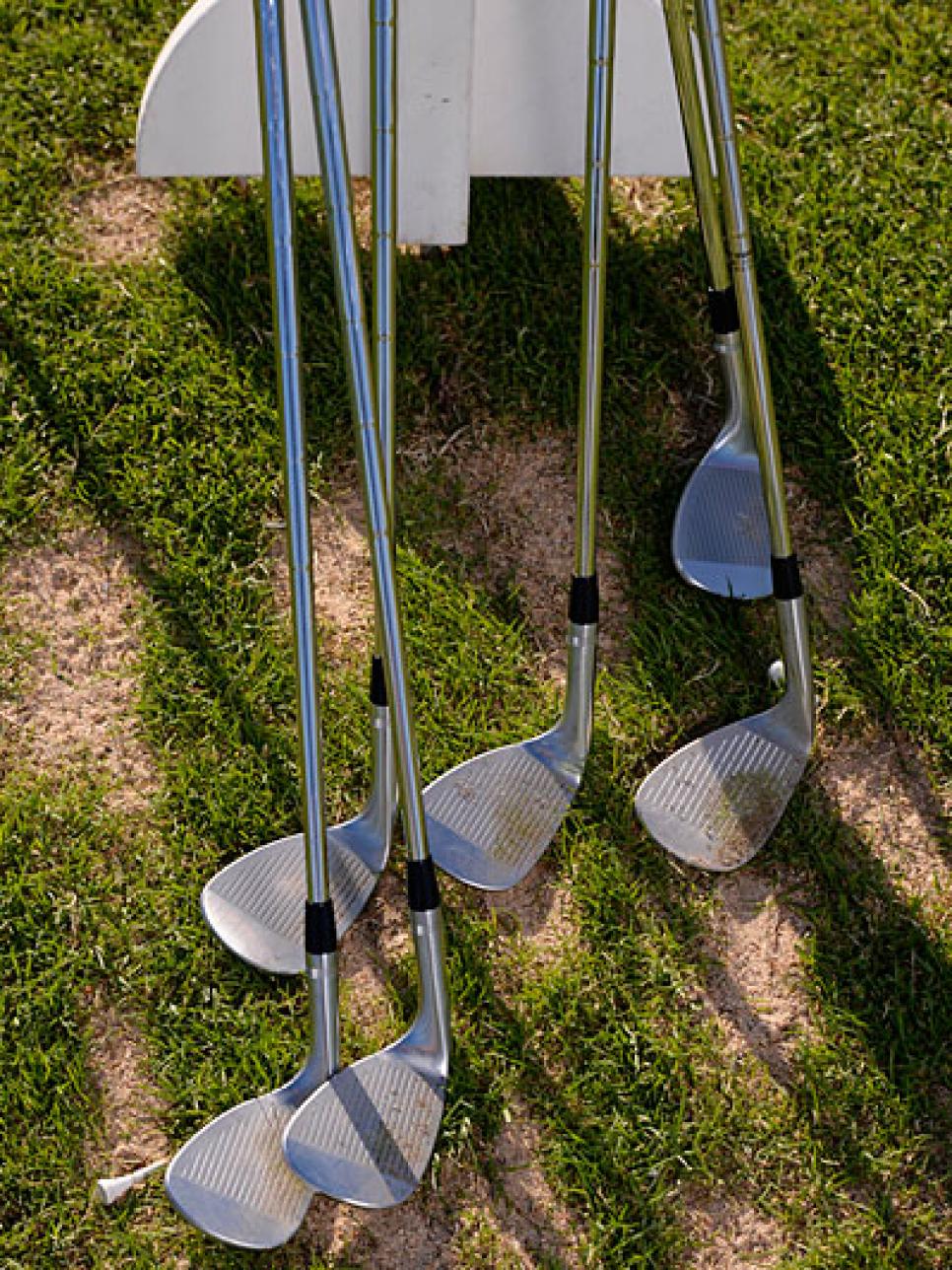[PHOTO: Houston Chronicle/Hearst Newspapers via Getty Images]
Wedges are similar to putters in that they are a personal product. But unlike putters where golfers go through model after model until they get one that works, most golfers simply stuff a couple of wedges in their bag without much thought. “Most golfers have no idea how ill-fitted their wedges are to their game or course,” says Bob Vokey, master craftsman for wedges for Titleist. “That costs them strokes.”
That’s because the high majority of golfers pay little attention to the bounce or grind of their wedges, in part because they simply lack the knowledge of what these two things are, how they are different and why they are a vital aspect of the wedge-selection process.
Bounce: It’s different for every golfer
Titleist’s website offers a solid description of bounce: “Wedge bounce is the angle created between the leading edge and the lowest point of the sole or trailing edge. This angle forces the club to ‘bounce’ or skip out of the turf, quicker and easier as it contacts the ball. The greater the wedge bounce degree, the higher the leading edge is off the surface at address. Having the proper wedge bounce and grind option promotes optimal contact, control, and ball spin.”
OK, so that’s what it is. But how do I know which is right for me?
There are multiple swing types golfers have with the wedge but they tend to fall into one of three buckets. There’s the digger driver who is steep and aggressive, somebody who takes a big divot. This player needs something with a lot of bounce (10 degrees or more) even on a higher degree wedge like a 60-degree. The sweeper-slider – somebody who really picks or sweeps the ball off the turf – needs a wedge with a low-bounce (4 to 6 degrees) as it allows the club to get down into the ball and allows that person to make better contact. The driver-slider is right in between the two. That golfer takes more of a banknote-type divot and might mis-hit thin or fat. That person needs more of a moderate bounce angle in the 7 to 10-degree range.
Conditions also can play a role. Those who play on lush or wet courses require more bounce in their wedges; less bounce is desirable for those playing on firm terrain. Although tour pros are reluctant to change their wedges, preferring to stick with what they’re comfortable with, some weeks present conditions that are simply too different to ignore. The Masters and Open Championship, in particular, are weeks when players will alter or change their wedges. The conditions during those weeks are firm and tight and courses such as those often require less bounce and the players know that.

One of the reasons everyday golfers struggle with the concept of bounce is most believe it has to do with the width of the sole. That’s incorrect. A wide-soled club can have very little bounce (in fact, the old Hogan Sure-Out wedge had almost zero bounce). Or it can have a lot. Understanding the subtleties of wedge play and having the right bounce based on swing type and course conditions, they say, can help shave more strokes off one’s game than just about anything else.
Grind: The secret ingredient
OK, now that you understand bounce, let’s get into grinds. In short, a wedge grind is the removal of material from the sole of the club in an effort to enhance turf interaction and versatility, allowing for more creative shotmaking around the greens.
Like bounce, the type of grind you want to consider is often dictated by swing type and course conditions, along with the type of shots you like to play around the greens. Some grinds like a C-grind offer heel and toe relief making it easier to open the club up. Others feature trailing edge relief that reduces the effective bounce. Conversely, a V-grind provides more bounce in the leading edge area.
Wedge grind and wedge bounce in some ways go hand in hand as you need to understand the effect one has on the other. For example, a grind that makes it easier to open the face will create additional bounce. A grind that promotes more of a square face lessens the bounce.
As with bounce where certain lofts might have a different bounce from others, many tour pros utilise a different grind depending on the loft. That’s because the lower-lofted gap wedges are used more for full swings while the higher-lofted wedges are used more for bunker shots and greenside shots while still being able to hit the occasional full shot into the green. As Exhibit A, we give you US Open champion Wyndham Clark.

“In the 46-degree, I use the 10F and then the same thing pretty much with the 52, I use the F-grind with a little touch more bounce [12 degrees],” he says. “I’m very shallow, so when I try to hit a low trap draw or a high soft wedge, it reacts the same and doesn’t dig. For the 56, I have the 10S. The S-grind is a very versatile club for me, has a ton of spin and I’m able to attack both front and backs pins with this. The most important club for me, probably in my bag, is the A-grind. I use the SM9 60-degree A-grind, which is a low-bounce wedge, which I think is very versatile. On tight lies, rough, wet lies, firm lies, whatever it is, I can hit the shot I want with the amount of spin I want, trajectory and everything.”
Which one is for you? It’s impossible to say as we’ve never seen you swing. Being aware of what each grind does, however, is a good start to navigating the maze of options. And if you’re still confused, seeing a qualified fitter is never a bad call.




